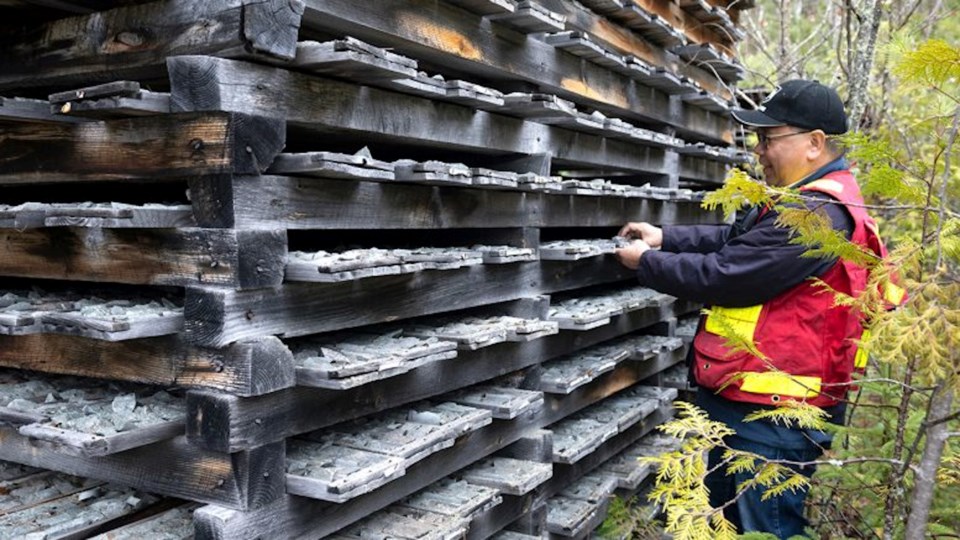An exploration company is bringing in the academics to gain new knowledge of an historic gold and base metal property in the Shebandowan area, west of Thunder Bay.
Vancouver’s Goldshore Resources is teaming up with Lakehead University geology professors Pete Hollings and Noah Phillips and their team to get a better geological handle of the mineralization in the area.
The company and the school recently announced the researchers landed $315,000 from funding from Natural Sciences and Engineering Research Council of Canada (NSERC), Mitacs, and from Goldshore itself to investigate a portion of a minerally-rich greenstone belt.
Goldshore is a junior mining company searching for gold 100 kilometres west of Thunder Bay at its 14,292-hectare Moss Gold Project. The property is just south of Highway 11.
Want to read more stories about business in the North? Subscribe to our newsletter.
The company has high hopes that Moss Lake has the kind of open-ended gold potential that can make the property a Tier 1 asset.
Cashed up with $20 million this spring, the company announced in April to was picking the pace of exploration in looking to deploy as many as 10 drill rigs on the property.
Goldshore acquired the property from Wesdome Gold Mine in early 2021.
The property has been picked over by a number of exploration companies since high-grade gold was first discovered by prospectors in the late 1800s.
Over the decades, companies such as Falconbridge and Wesdome have surveyed and drilled the property.
A previous company, Moss Lake Gold, released the last resource estimate and a preliminary economic assessment for a mine in 2013 based on a now-historic resource of 1.47 million ounce of indicated gold and 2.51 million ounces in the inferred category.
The property hosts the former North Coldstream Mine, a copper, gold and silver producer which operated between 1957 and 1967, along with two other identified gold and base metal deposits, plus numerous mineral occurrences across the property, some outcropping at surface.
Sign up for the Sudbury Mining Solutions weekly newsletter here.
The company said the deposits sit on a regionally significant and “significantly underexplored” mineral trend called the Wawiag Fault Zone, spanning a 20-kilometre length across their property.
Goldshore said the exploration potential surrounding the historic mining area is not well understood and a compilation of all the historic drill and exploration data is required.
A news release from Lakehead said the team will study the volcanic and structural architecture, petrography, and chemical alteration of the greenstone belt.
“The ability to embed our students within the Goldshore operations thanks to the support from Mitacs and NSERC will be a great opportunity for the students and postdoc researchers to contribute to the ongoing exploration in the region.”
A statement from Goldshore’s vice president of exploration Pete Flindell said one of the aims of the Lakehead study will be to “develop vectors toward mineralization that we will use to grow our resource inventory.”



.jpeg;w=120;h=80;mode=crop)
